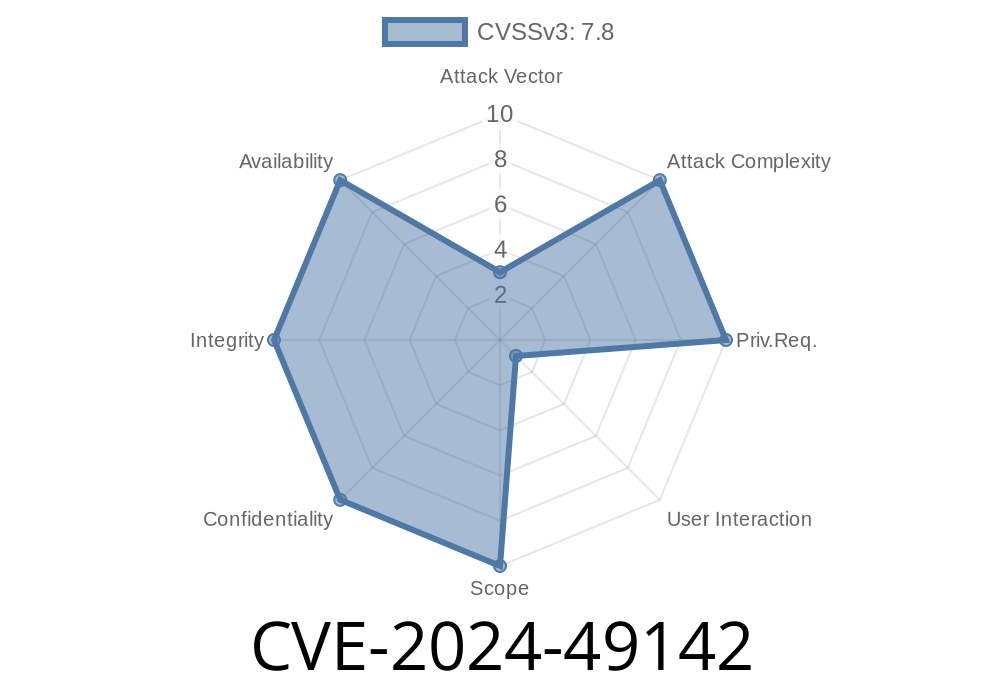CVE-2024-49142 is a critical security vulnerability affecting Microsoft Access, the popular database management software included in Microsoft Office. This vulnerability allows a remote attacker to execute arbitrary code on your computer simply by tricking you into opening a malicious Access database file (.mdb or .accdb). With successful exploitation, the attacker could gain the same privileges as the logged-in user, install programs, steal data, or even take full control of the compromised system.
How does the vulnerability work?
At the heart of CVE-2024-49142 is improper validation of certain components inside Access database files. When you open a specially crafted database file, malicious code embedded within gets executed due to a flaw in how Access processes the file. This can happen if you double-click a file sent by email, open an Access file from the web, or even from a shared network drive.
Attackers use tricks like embedding macros, malicious data objects, or exploiting unsafe ActiveX controls in Access files. Microsoft Access will often display warnings about potential security risks, but social engineering can convince a user to ignore them.
Proof of Concept: How an Attack Might Look
Below is a code snippet that demonstrates a simplified version of how malicious code could be embedded. In reality, attacks may be more complex and harder to spot.
Example Malicious Macro in Access VBA
' Place this code in a module in the Access database file
Private Sub AutoExec()
' This runs automatically when the database opens
Dim objShell As Object
Set objShell = CreateObject("Wscript.Shell")
objShell.Run "cmd.exe /c start https://attacker-website.com";
End Sub
How it works:
Named AutoExec, this macro runs automatically when the database is opened.
- It opens a command prompt and launches the attacker's website, but could easily be used to download malware, run commands, or steal data.
Exploitation Steps
1. Attacker creates a malicious .mdb or .accdb file using the VBA code above or other exploit techniques.
2. File is delivered: It could be sent as an email attachment, shared through a cloud drive, or delivered via instant messaging.
Links to Original References
- Microsoft Security Response Center - CVE-2024-49142
- NIST National Vulnerability Database - CVE-2024-49142
- Mitre CVE Directory - CVE-2024-49142
Use phishing to convince staff to open a malicious database.
This vulnerability is even more dangerous because Access files often get shared between coworkers, so one person opening a bad file could compromise the whole network.
Mitigation and Protection
1. Apply Microsoft's official patch: Always keep Access and Windows updated. Microsoft has released patches for this vulnerability.
Conclusion
CVE-2024-49142 is a serious flaw with real-world exploitation potential. Companies and individuals should patch immediately and train users to be skeptical of unexpected Access databases. For more technical details and the latest updates, always refer to the official Microsoft advisory and the NIST database.
Timeline
Published on: 12/12/2024 02:04:40 UTC
Last modified on: 01/08/2025 18:54:15 UTC
